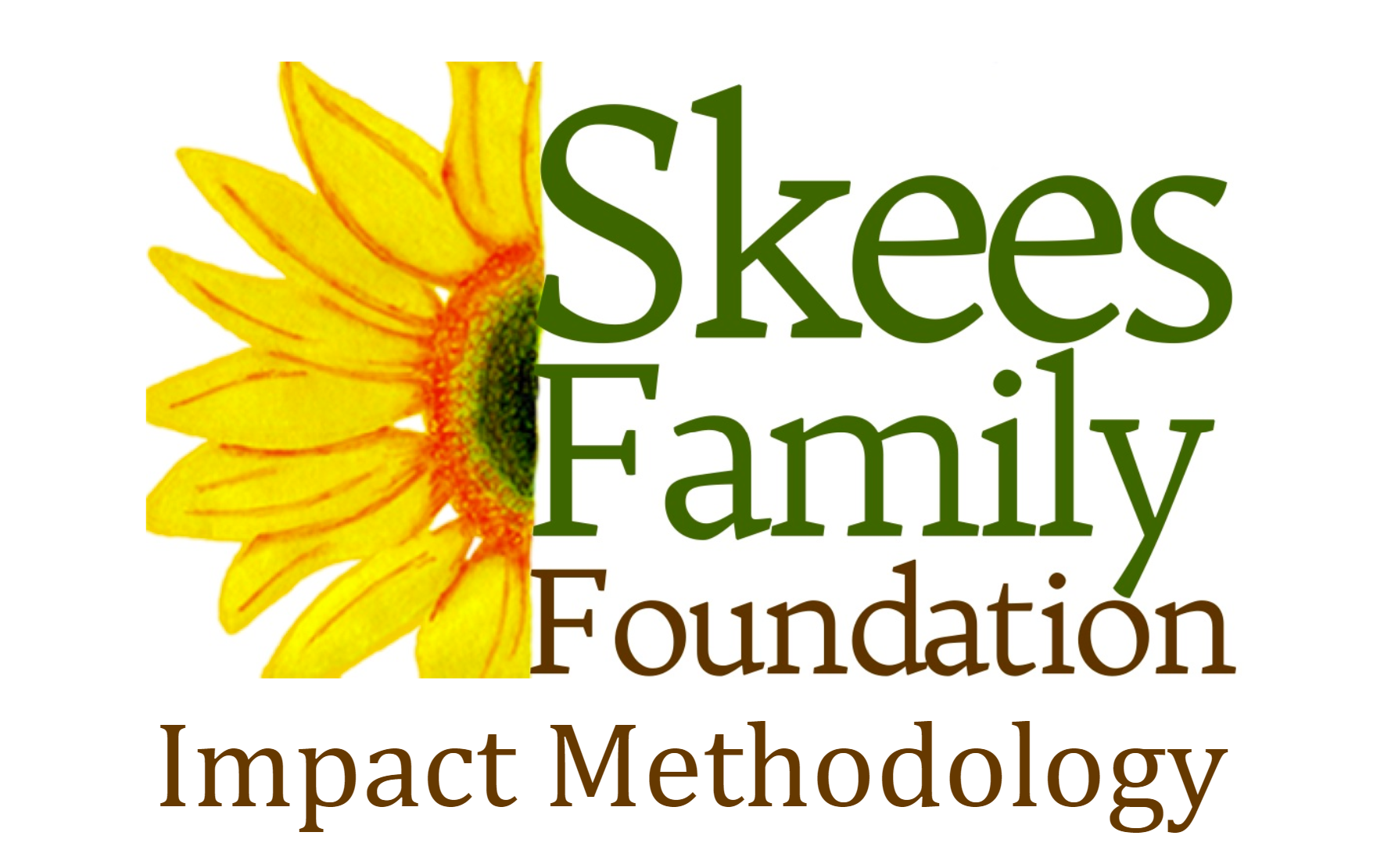Partner-Centric Philanthropy: Minimizing the Power Imbalance in Funder and Nonprofit Relationships
Categorized as: About us, Grantmaking strategy, Leadership, Stories on January 25, 2020.

Photo courtesy of Austin Neill on Unsplash.
Editor’s Note: As most of you loyal readers know, 2019 was a crazy year for us. One of our biggest tasks was narrowing down what we do, why we do it, and how we do it. We at SFF have always believed in and trusted our nonprofit partners and we have aimed to highlight that trust in how we give grants.
Below is a step-by-step guide in how we give grants, how our methodology benefits us as well as our nonprofit partners, and why other foundations should consider shifting the power imbalance.
 By Bri Skees, Program Officer and VP of Research and Data Management
By Bri Skees, Program Officer and VP of Research and Data Management
Skees Family Foundation (SFF) recently celebrated our fifteen-year anniversary. Over the years, we have learned so many lessons about fighting poverty, and are always trying to improve our impact. Of greatest importance to us is the respect and trust we hold for our nonprofit partners. We have formed, and continue forming, our grantmaking and investing structures in our best attempt to honor these values. What follows is the methodology we’ve come to in our own careful considerations, primarily in the angel or pre-angel phase of organizational development. If you have a role in funding poverty alleviation, or any other area of work, we strongly encourage you to consider this method as you assess your own goals and values.
In brief, the Skees Impact Methodology is built on the following principles. These are described in more detail further below, and separated in terms of grantmaking principles and investment principles.
- No Restrictions: Unrestricted funding shows trust and respect for our partners. They know where the money is most needed, and we don’t have the burden of keeping track of specific projects.
- No Applications: All the information we need is found through our own research. This helps us keep our workload lighter by not having to go through hundreds of applications, and it provides our new partners a welcome surprise, with infinite return on investment.
- Limited Reporting: We have calls once a year with our partners to discuss how they’re doing and their plans for the future. We don’t ask for written reports – we talk to our partners and create enduring relationships.
- Multi-Year Grants: Two to six-year grants give us the opportunity to build relationships with our partners and for them to have the security of longer-term funding.
- Storytelling Assistance: Through our Seeds of Hope blog and the My Job social mission project, we tell the stories of our partners. We get to shine a light on their work, and they get a bit of free promotion!
- Funding Channels: Our partners are often challenged in finding their next level of funding. In response, we are creating a network of funders to help guide our partners toward their next grant. We can pass on our knowledge about individual organizations, as well as receive recommendations from other funders, saving everyone a lot of time.
- Crowdfunding: At SFF, our ambitions are larger than our corpus. To make sure our partners get the funding they need, we are creating a crowdfunding campaign to help other people within the same cause find great organizations quickly.
- Direct Impact Investments: For many of our partners, the ability to scale rests on access to capital, and we often maintain relationships through direct impact investments. This allows us to stay in touch with our partners and invest in someone we trust, while giving them access to affordable debt and a reasonable return to the Skees corpus.
- 100% ESG Market Investments: Beyond impact investments, the remaining majority of the corpus is invested with an Environmental Social Governance screen, ensuring our corpus is working for good. This helps us increase our impact substantially while avoiding investments that are working in contradiction with our mission, all while maintaining strong returns to support our grantmaking.
Grantmaking Principles
No Restrictions
Restricted grants are extremely common in philanthropy. It is easier to keep track and measure the impact of restricted grants. However, these aren’t always the most useful to our nonprofit partners and by restricting grants, you can even make their work more difficult and greatly decrease their return on investment.
One of the most impactful things we do at SFF is give unrestricted grants. We have several reasons for this. First, we trust our nonprofit partners to use their grant as they see fit. We do not give grants unless we have complete respect and trust in our partners. They are the real experts within this field, and they know how to run their organizations.
Second, we know there are overhead costs to running a nonprofit, and not all money can go directly into programs. Sometimes, you need to replace the lightbulbs. We don’t mind our grants going toward these costs, and feel our partners can only be effective if they have funding to cover them.
No Applications
Nonprofits spend so much of their time filling out applications for grants from a variety of sources. It requires a lot of effort on their part, and it only possibly results in a grant.
We do not require applications for our grants. We feel the time of nonprofits is much better spent doing the work they are best at! Most of the information we need is out there, we just have to look for it. We use websites, annual reports, publications, and our peers to find the information that we need to determine if the partnership will be successful. We don’t need nonprofits spending this time putting an application together when we are able to find this information on our own.
Limited Reporting
When SFF first began grantmaking, we required grant reports. Although it wasn’t much, we still required our nonprofit partners to put their successes down on paper so that we could see the impact they were having and we could evaluate our grantmaking successes based on theirs. However, over the years, we learned that while some nonprofits really enjoy doing this and are happy to write reports, others find it exhausting. So, we used that information to make some changes in how we asked for reporting.
At SFF, we now require very limited reporting, and we do not require any official grant reports. We only ask that once a year, our nonprofit partners get on a call with an independent consultant to give updates on their progress, goals for the future, and any bumps they have experienced along the way.
We also ask that they give feedback about SFF, which is then compiled by the third party contractor and put into an anonymized report. We take that feedback and apply it to how we run the foundation.
Multi-Year Grants
This is one area that took us a long time to commit to. Year after year in our calls with our nonprofit partners, they asked for multi-year grants. Often, nonprofits cannot plan sufficiently for the future because they aren’t always sure where their funding will come from. But it took us a long time to commit to making this change, especially with newer partners without long-term track records. However, we decided that if we really wanted to help a partner get off the ground, we had to make this change.
Now at SFF, we have a unique multi-year grantmaking structure. We start with Seed grants and work our way into Catalyst grants:
- Seed grants are for small nonprofits who are new and relatively unknown. Organizations in this phase often have a hard time getting grants because of their lack of credibility and experience. However, we feel that organizations like these are often the most innovative and creative. So, we offer them a two-year grant with the opportunity for an additional year if they meet the goals they set out to achieve. Each year the amount of the grant increases.
- Catalyst grants are for former Seed grantees who are moving on to the next stage of their lifecycle. This is often where nonprofit partners are scaling their organization. This grant is for three years and is designed to promote growth. It starts off relatively large and decreases each year.
This type of grantmaking gives nonprofits security and allows them to plan for scale.
Storytelling Assistance
Many foundations are looking for additional ways to elevate their partners aside from financial support. It can be difficult to add in a whole new component to how you run a foundation, but that extra little boost could mean everything in terms of impact. For us, we focused on our talents of writing and storytelling.
At SFF, we have multiple approaches to storytelling. We try to highlight our partners’ work as much as possible and give them opportunities to tell the world about the work they do. This is something we are capable of offering that is relatively inexpensive for the foundation and a big value-add for our partners.
Our first storytelling project is our bimonthly blog, Seeds of Hope. Each publication either highlights one of our partners, is written by one of our partners, or shares updates on SFF. We receive consistent feedback from our partners that this is something they really appreciate and find value in.
Our second storytelling project is a book series called My Job. This is a social-mission project created and organized by our founder, Suzanne Skees. She contrasts work lives from around the world to provide a lens through which we can recognize our similarities and diversity. The purpose of each chapter is to challenge conventional thinking about how a job is valued and undertaken from the viewpoint of distinct cultures. In some chapters, she highlights one of our partners, but more significantly all proceeds from these books go toward our grantmaking.
Funding Channels
Each year when our partners are interviewed, they always ask about our connections to other funders. Finding funding can be one of the most time-consuming activities that nonprofits face, and being able to facilitate introductions to other funders is an incredible value-add for our partners. Building this network to maturity is a key pillar of our strategy, and something you can expect to hear more about in the future. The intent is to offer our partners a handoff to the next stage of funding, by offering the next funder our recommendation and data collected.
Crowdfunding
Due to our small corpus size, the grants that we make are relatively small. Because we believe in our partners so much, we want to be able to help build up their revenue alongside them. This is a pillar of our strategy and will we be building the infrastructure to help crowdfund for our grantees.
Investing Principles
Direct Impact Investing
Sometimes that 5% grantmaking requirement doesn’t seem like enough, no matter the size of your corpus. So in 2012, we decided to dip our toes into impact investing. This gives us the opportunity to invest more in our grantee partners, as well as in other social entrepreneurs doing incredible work. Although the return on investment (ROI) for these investments is significantly less than what one would expect from traditional investments, it is worth it to us to have much higher social return on investments (SROI). Additionally, we get to continue our financial relationship with our partners.
When looking at impact investment proposals, we generally look at the ROI, the length of the loan, the amount of the loan, as well as references and other investors. We don’t have a lot of time or money to invest in further due diligence, but can also rely on our financial advisors to help guide us in the right direction. Our current general rule of thumb is to never invest more in any one investment than we would feel comfortable converting to a grant in a worst case scenario.
So far, our investments have gone very well and we will soon be committing more of our corpus into this type of investment strategy. We currently have 5% invested in direct impact investments, which we found through professional connections and through our partners. We hope to bring this number up to 20%, investing primarily in previous nonprofit partners.
100% ESG Market Investments
ESG investing requires a lot of research and is a bit overwhelming when you first begin looking at it. There are so many different definitions and spectrums. It took us a year to sort through all of our research and make the decision to go in this direction. We are happy to share this research and our conclusions on request.
Our shift to 100% ESG market investments was made possible by finding a firm dedicated to ESG, who worked with us to find investment options that are aligned with our values as a foundation. Our investments are still in the traditional investment sphere, but now have an additional ESG screen so that 100% of our corpus is having a positive impact on the world, not just our annual 5% payout.
Join Us
Do you love the work we’re doing, and want to learn more? Are you inspired by our nonprofit partners and want to co-fund? Or do you have any other ideas and suggestions for how we can improve our grantmaking? We would love to hear from you! Email Brienne at [email protected] with any questions, proposals, or ideas on our partner-centric methodology.
LEARN more about all of our grantees here.
SHARE this story on Facebook and Twitter; see menu at top and bottom of page.
SUBSCRIBE! Like what you see? Click here to subscribe to Seeds of Hope!

